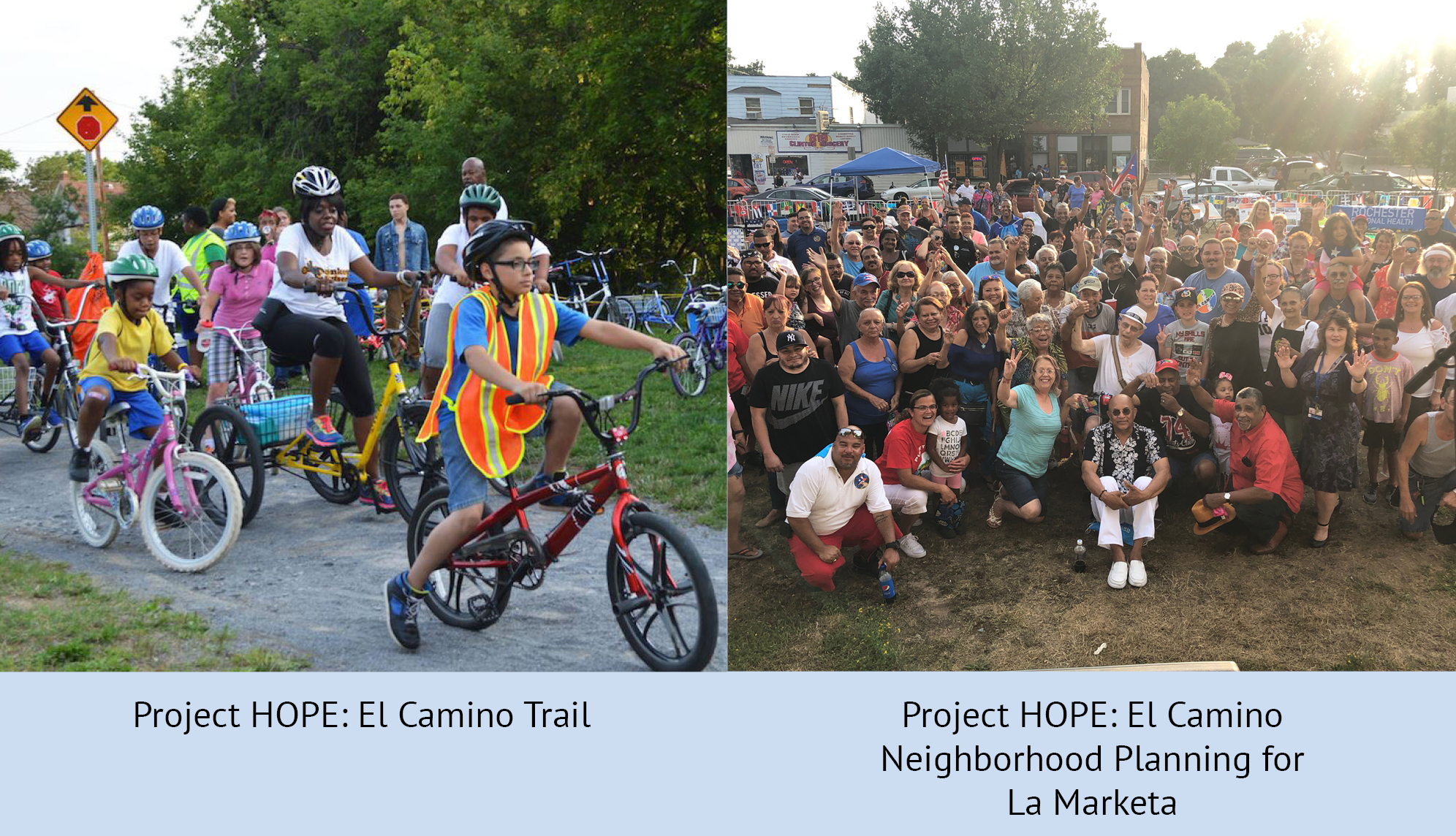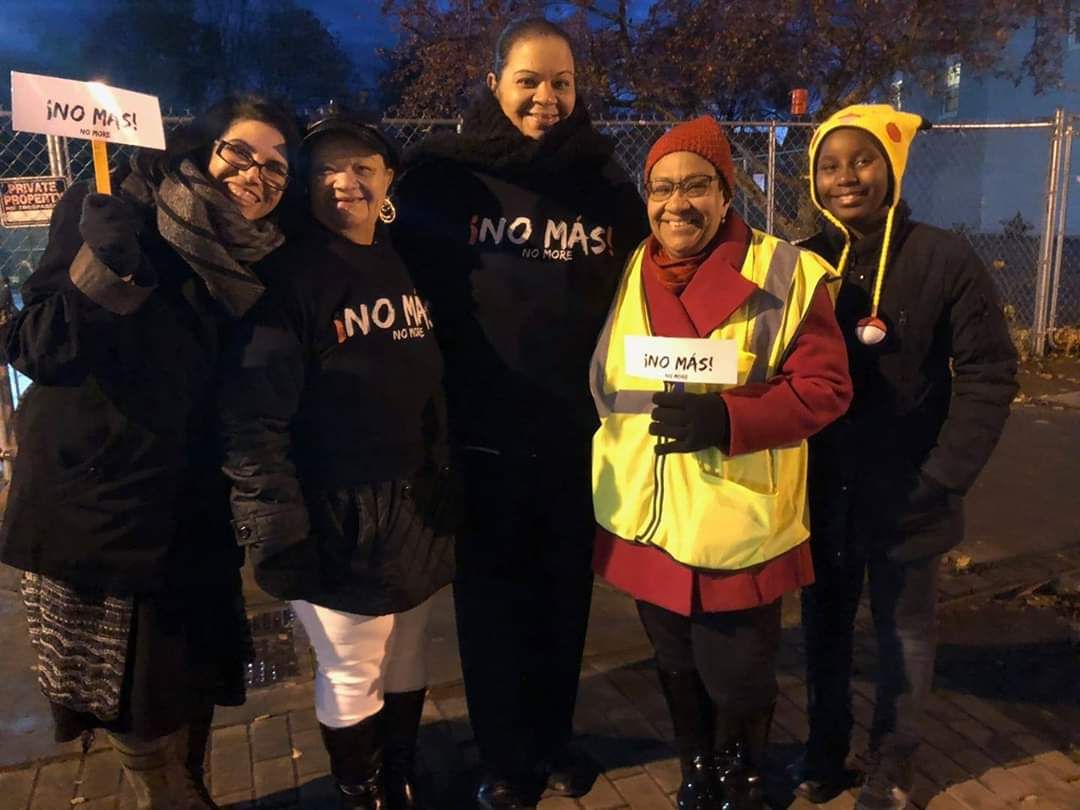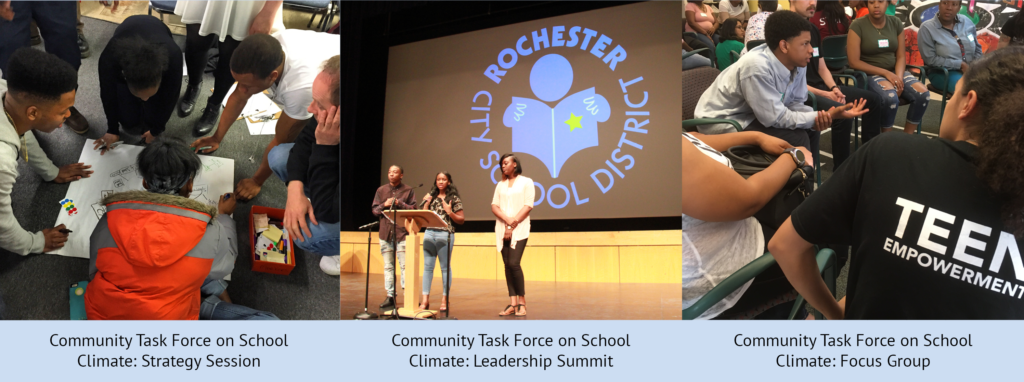2020 All-America City – Rochester, NY
The strength of Rochester’s civic infrastructure lies in their intentional efforts to develop partnerships and engage people and institutions to identify and solve problems together. For centuries Rochester has nurtured and disseminated valuable innovations that have benefited the region as well as all corners of the globe. Many highly influential ideas, products and historic figures were developed and nurtured in Rochester, and ultimately were made more accessible to people of all backgrounds and to places well beyond Rochester.
In the spirit of that great heritage, the community continues to look for creative and inclusive paths forward that embrace collaborative engagement and decision-making. A recent model of civic engagement culminated last year as the city unveiled the Rochester 2034 Comprehensive Plan, a culmination of nearly two years of Rochesterians coming together to dream about their future. Non-profits, corporations, local businesses, residents, city staff, elected officials and advocacy groups contributed to the plan, and are now collaborating on its implementation.
High Blood Pressure Collaborative
One third of adults in the Rochester-Finger Lakes region of New York, roughly 350,000 people, are diagnosed with high blood pressure, which contributes to one half of heart disease deaths and is a leading cause of stroke and kidney failure.
To deal with this chronic illnesses, the High Blood Pressure Collaborative was launched in 2010. Guided by leaders from healthcare, business, education and other sectors, the initiative is focused on improving blood pressure control for adults in the region.
The multi-faceted intervention has provided best-practice consulting in clinical settings and hypertension interventions in congregations, worksites, neighborhoods, barbershops and salons. Multi-media campaigns encourage residents to “know their numbers” and to develop a “reminder” to help make taking daily medication a habit.

To track progress, the collaborative created one of the nation’s few, if not only, community-wide hypertension registries.
Despite steady community-wide improvement, the control rate for Blacks and Latinos continued to lag behind Whites. Tailoring interventions to communities of color became increasingly important so, the project pivoted from conducting blood pressure screenings at large community events to more targeted screenings and from running broad communications campaigns to ones focused on target populations. Another intervention was at barbershops and salons, ideal locations for raising awareness about health disparities in Black communities.
The collaborative’s work has had impressive results. Between 2010 and 2019, the community-wide registry data show a 45% decline across the region in the rate of adults with dangerously high blood pressure and 82.1% of individuals have their blood pressure under control.
Project HOPE and El Camino Neighborhood Revitalization
The Ibero-American Development Corporation (IADC) has invested and collaborated on many projects in the diverse and low-income El Camino neighborhood.
Among several efforts, IADC spearheaded Project HOPE, which aims to improve the overall health and well-being of the neighborhood. IADC galvanized the power of resident voices to create the El Camino Charrette & Vision Plan.
From the plan, the El Camino neighborhood has been able to organize several block clubs and neighborhood groups, develop strategic partnerships, work jointly with IADC to identify funding opportunities and apply for resources.
The community also began The La Marketa project, a pop-up cultural market with food, local vendors and a stage with live musicians and performances.

Another major project that was developed was El Camino, the 2.25-mile trail that runs through the heart of the neighborhood, connecting residents to parks, recreation centers and businesses.
One of the most prominent resident-initiated efforts is the Children’s Garden on Treyer Street, created by neighborhood moms who reclaimed three vacant lots that had been a hotbed for drug activity and prostitution for years. More than just a garden, the Treyer Street space has hosted Zumba classes, karate, free lunch distribution and so much more.
 Most recently, IADC is working with residents to combat the local opioid epidemic. The ¡No Más! public awareness campaign has resulted in syringe clean-up efforts and contracted safety projects with the Rochester Police Department.
Most recently, IADC is working with residents to combat the local opioid epidemic. The ¡No Más! public awareness campaign has resulted in syringe clean-up efforts and contracted safety projects with the Rochester Police Department.
Major investments will also be coming to the neighborhood and the community is excited for the collaborative work to continue.
The Community Task Force on School Climate
Rochester City School District (RCSD) data showed that Black students were suspended 2.5 times as often as their White peers, and students with disabilities were suspended twice as often as their general education peers. Given the troubling research linking out-of-school suspensions to eventual incarceration, Rochester activists and community members invited the Advancement Project to help bolster local capacity to address the school-to-prison pipeline.
The Advancement Project helped launch a collaborative effort facilitated by the Rochester Area Community Foundation, along with a wide variety of community stakeholders. The Community Task Force on School Climate (CTF) was formed to develop recommendations to improve school climate in the district.
Under the auspices of CTF, a group of local advocates from the Alliance for Quality Education began compiling a report on school discipline. The report, Breaking The School-To-Prison Pipeline: The Crisis Affecting Rochester’s Students And What We Can Do To Fix It, was released and extensive media coverage catalyzed change.

After a lengthy revision process that involved input from hundreds of students, parents, educators and community members, the RCSD Board of Education unanimously passed a new code of conduct, detailing RCSD discipline policies. The new code removed criminal language, clarified vague guidelines, made suspensions a last resort and promoted alternatives to suspension such as restorative practices.
In the new code’s first year alone, total suspensions dropped a remarkable 27% and a further 8.4% the following year. Additionally, RCSD adopted several other interventions, including professional development in restorative practices and help zones replacing in-school suspension rooms.
Some Related Posts
Thank You to Our Key Partners



